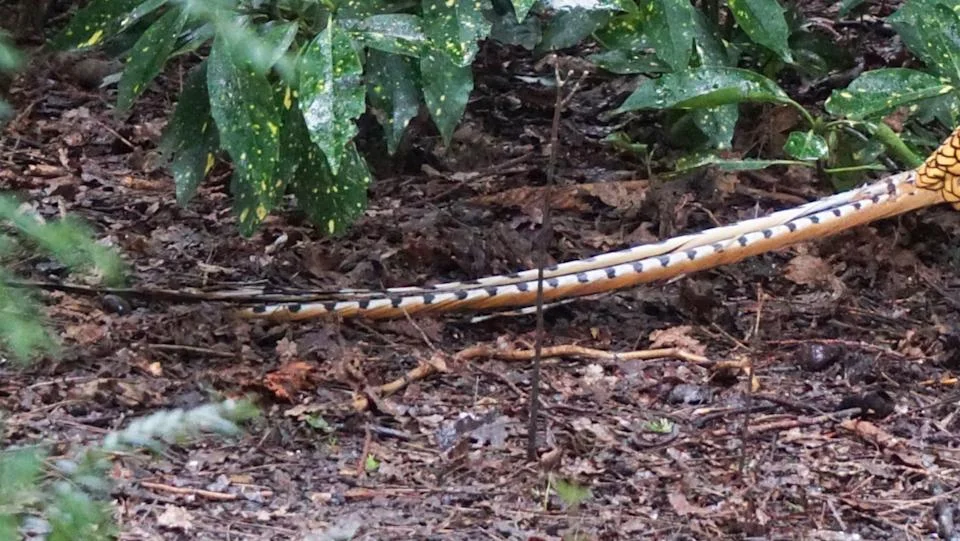
The Rare Reeves’s Pheasant: A Stunning Yet Vulnerable Reminder of Conservation Challenges
A recent sighting of a Reeves's pheasant in a residential garden in Wiltshire, England, has captivated locals and highlighted the pressing issues surrounding this endangered bird. The beautiful creature, with its bold black, white, and golden plumage, symbolizes both nature's splendor and the precarious position of many species today.
The male Reeves's pheasant is known for its extraordinary long, patterned tail, which can reach lengths of up to 8 feet—an impressive feat that makes it the champion of tail feathers among wild birds. Females, by contrast, sport less colorful mottled brown plumage, making the male's striking appearance all the more breathtaking. This recent sighting serves as a reminder of the unique biodiversity we share our planet with, especially as the Reeves's pheasant is categorized as a vulnerable species by the IUCN.
Originally native to China and first introduced to the U.K. in 1831, the Reeves's pheasant has become a rare sight in English farmlands. The Swindon Advertiser reported that its current population in the U.K. is sparse, as these birds typically inhabit areas near woodlands. However, the estimated global population is disheartening, with only about 3,000 to 5,000 individuals left in the wild.
Major threats to the Reeves's pheasant include habitat loss and fragmentation due to urban development and agriculture. Additionally, hunting historically depleted their numbers, as their magnificent tail feathers were coveted for traditional Chinese opera costumes. The consequences of these actions are still felt today, as rising global temperatures and environmental disruptions continue to alter the habitats essential for their survival.
The plight of the Reeves's pheasant serves as a potent example of the fragility of our ecosystems. Conservation efforts are underway, focusing on habitat protection and captive breeding to bolster wild populations. Despite these initiatives, the trajectory for the Reeves's pheasant remains troubling.
This rare sighting is more than just an occasion to appreciate this bird's beauty; it is a stark reminder that our commitment to preserving the environment is more crucial than ever. With every vulnerable species, including the Reeves's pheasant, we are reminded that the web of life is intertwined—a disruption somewhere is a disruption everywhere.
As we reflect on this extraordinary bird, consider what actions you can take to aid in conservation efforts. Each of us holds the power to make a difference. How will you contribute to protecting our planet's rich biodiversity? Share your thoughts in the comments below!